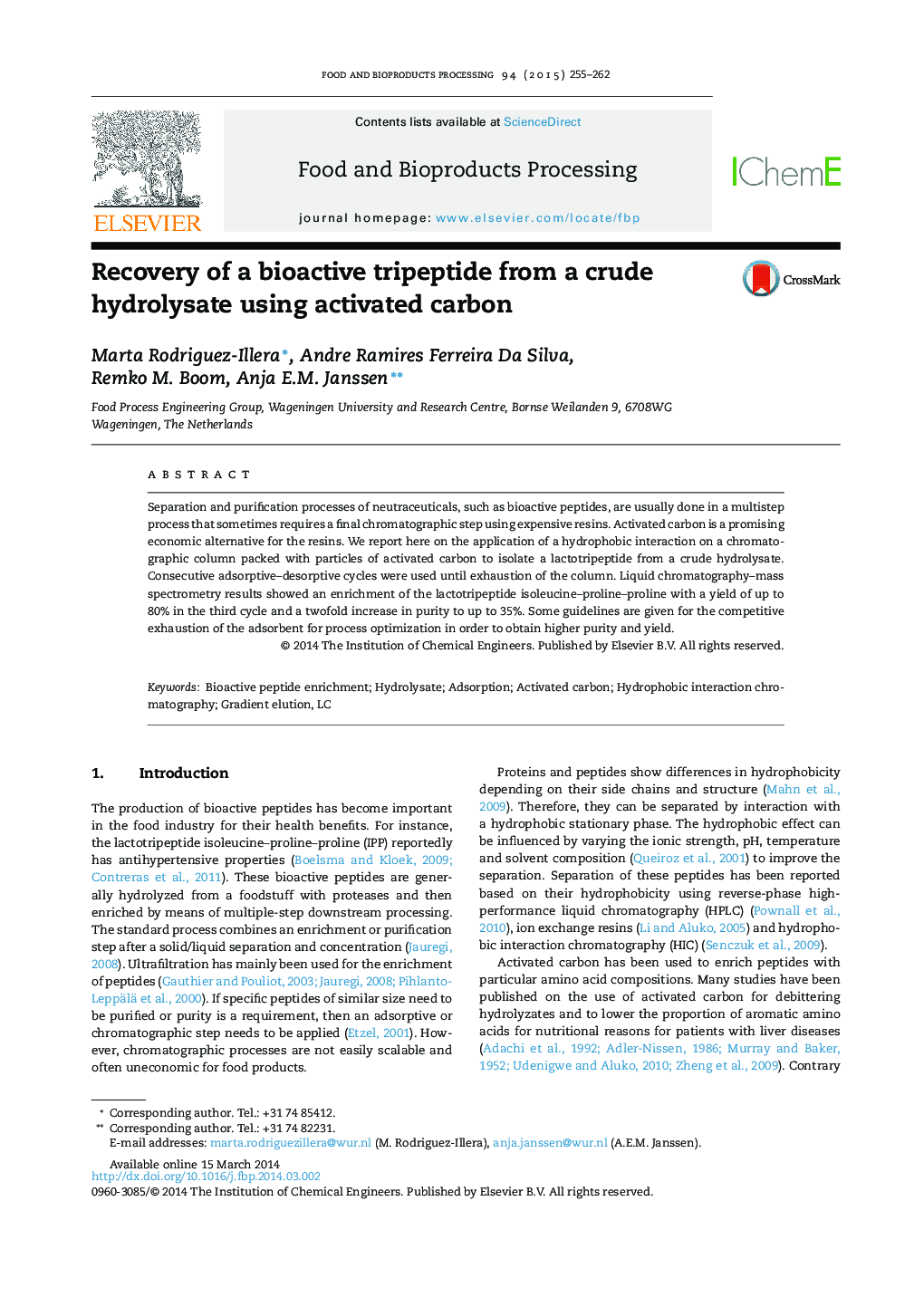| Article ID | Journal | Published Year | Pages | File Type |
|---|---|---|---|---|
| 18916 | Food and Bioproducts Processing | 2015 | 8 Pages |
•Enrichment of a single bioactive peptide using activated carbon.•Adsorption process described for several adsorptive−desorptive cycles.•Gradient elution and peak fractionation during desorption lead to purity increase.•Guidelines for more suitable activated carbon characteristics have been deduced.
Separation and purification processes of neutraceuticals, such as bioactive peptides, are usually done in a multistep process that sometimes requires a final chromatographic step using expensive resins. Activated carbon is a promising economic alternative for the resins. We report here on the application of a hydrophobic interaction on a chromatographic column packed with particles of activated carbon to isolate a lactotripeptide from a crude hydrolysate. Consecutive adsorptive–desorptive cycles were used until exhaustion of the column. Liquid chromatography–mass spectrometry results showed an enrichment of the lactotripeptide isoleucine–proline–proline with a yield of up to 80% in the third cycle and a twofold increase in purity to up to 35%. Some guidelines are given for the competitive exhaustion of the adsorbent for process optimization in order to obtain higher purity and yield.
